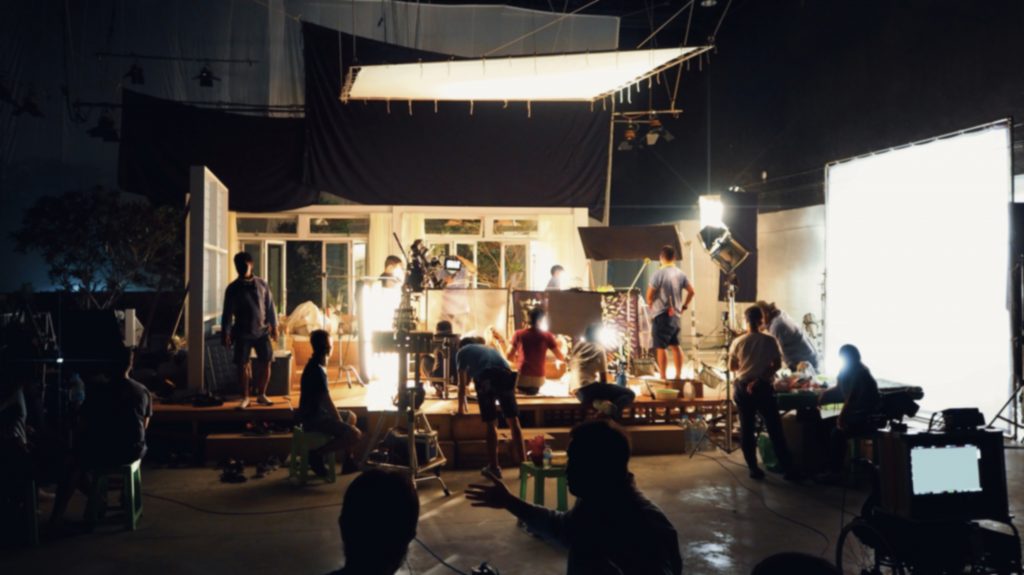Guidelines for schools, teachers, and parents when your class starts going online

A week back, I wrote an article about how educators and parents could prepare with technology for a biological incident such as coronavirus. What does this look like in action?
Today I explore a hybrid configuration. Schools might not actually close their doors. They may have to cater for students who are unable to physically attend class though. Parents who have travelled abroad to a high-risk area might have exposed their children to the virus. Their condition might be uncertain during a viral incubation period. Schools might safeguard their students and staff by asking that these people stay at home as a precaution.
This week I experienced just such preparations and pilot tests in person. I would like to share some of my learnings to help you with your planning. This is not just something teachers or faculty have to do. The change is significant, and they are going to need help.
An army trains to respond to commands without question. When changed is forced on the rest of us our gut reaction is to resist. This is a natural survival trait, and we cannot blame people for responding in this way. We must manage change with tact and empathy, or this is exactly what is going to happen, Coronavirus crisis or not.
Plan your strategy well in advance
As I mentioned in my earlier blog, it is imperative to have a clear plan. This can change as you gain experience but start with something. Make it simple. Use bullet points with clear roles and trigger events. To ensure teachers can find the right material quickly, create an index. Use a recipe format so people have an easy flow to follow.
Don’t be clever with technical documents like flowcharts. Everyone I know wants to draw a flowchart because it looks cool. Everyone I know who has had to read a flowchart glazes over within seconds. Wrong tool for the situation.
Feel free to be visual with something like an infographic. But right now, immediacy is paramount. This is not the time to spend a week designing an award-winning poster.
Take every single stakeholder though the plan. Speak to them as a group. Make yourself available to them individually. Time spent here is time avoided later in crisis.
Take care of your teachers or faculty
It is easy to forget how much stress our teachers take on in preparation for a lesson. I speak to many lecturers who to me would seem just at home on stage with Bruce Springsteen as in a class. They still admit they feel physically ill the hour before they walk into a class. Imagine what walking up to them and saying “Hey, you’re on camera tonight, and we need to mic you up, and there will be a crew following you around” would do to them? Instant great-white-telephone perhaps?
A class in mid-stream has a flow to it. You will lose a whole lot of work and time if you walk into a class and decree “time to go online” halfway through a topic. This will completely lose the audience. Time your change properly.
Engage your teachers in dialogue as early as possible. Academics are interesting creatures. They want to unpack the essence of a topic research the broader context, and then peer review and publish. I am an engineer. This can drive me up the wall because dammit, this is an emergency, and we need action! But academics are not soldiers. Give them the room and listen with patience. If you open yourself up and stop foot-tapping, you will find great wisdom and experience in what they say. This is what they do day-in and day-out.
Stick to your decisions. Until you don’t have to. Academics by their very nature are inclined to pick apart older research. They will find problems in every action you take. This is what I call turbo “standing on the shoulders of giants”. Engineers call this Lean or Agile. We ensure we start doing the thing, then we learn, we pivot, and we improve. It’s really the same thing, with more talking.
Help your teachers teach each other and continue to engage with them as a group and as individuals. Take this learning back into your plan and respect their conclusions.
In the end it will be your teachers who are the heroes, not the administrators. If you see COVID-19 as an opportunity to be the most famous school administrator in the world, you are hiding the glory from your real stars.
Communication and transparency are fundamental
Agree your communication strategy and stick to it. Now is not the time to get funky with modern technology. Work with what the majority feel comfortable with, or you are going to have people not receiving the message.
Make sure your support teams know every point of the plan and can respond to any question.
Keep an easily accessible Questions and Answers record and regularly update this as new challenges arise.
Be open to being interrogated, criticised, and advised. It is the people in front of the camera who are the ones learning the most. Take it from them, no matter how unhappy they might be. I promise, they will eventually appreciate it if you show you are partnering with them.
Show progress. If someone raises a problem, send them a note saying thanks and explaining what you intend to do. Then do it. They will appreciate your compassion and nine-times-out-of-ten will work with you more constructively to come to an acceptable solution.
Train and practice with the tools you are using
A bad training experience can create more resistance than a bad communication. Sure, you might not have time to develop studio quality training material for your Zoom platform, but build a learning plan, and know your products.
Remember you will be training professional trainers. Ask one of them to help you develop your material.
Make sure your supporting documentation is clear and easy to reference. Nobody wants to wade through War and Peace in the middle of a Skype session which has gone wonky, they want the answer right there.
Encourage your teachers to practice on their own. Many of the tools offer free personal accounts and now the likes of Microsoft and BlueJeans are even extending this to entire institutions for the near future. The faculty I have worked with rapidly developed buddy systems and within a week are better than I am with the tools. Get involved and learn with them.
Do not overcomplicate things
It is highly likely that the more technically switched-on people will propose you use more sophisticated tools. Play to the lowest-common-denominator until people are comfortable. But let the tech gurus experiment and produce a plan to bring their learnings back. Just remember that this can be intimidating to someone trying to figure out what a password is, so guide the dialogue.
It is about the people in the classroom, not the technology
The lesson I learned very quickly was how distracting an engineer trying to fix a broken microphone can be to the lecturer and the class.
In the scenario today, there is a good chance that the people on the far end of the connection might be the exception, and the class will still be your focal point. Even if half the class are streaming, I promise they will understand that they are getting second prize in terms of experience and will be more forgiving than those people who braved the traffic to come to your school or campus.
Make sure your teachers understand this. Try not to scare them into focusing on the camera. They should carry on doing what they did before. If the technology fails, have an assistant in the wings communicate the issue to the remote students. Do not break the class flow. Wait for a natural comfort break and resolve at that point.
Technology should be invisible
In practice is not always possible, and interim solutions might involve the imposition of bulky webcams on tripods and cables all over the floor. Think about the layout of the room and talk to the teacher about their style in this context. Your setup should map to the flow of the original experience.
In some of the most dynamic classroom presentations, there is no way technology will be able to reproduce the experience remotely without a full broadcast and production team. Sometimes, the best you can do is to deploy a wide-angle camera at the back of the room, or stream slides, with a wireless lapel microphone on the teacher. In which case, politely ensure the remote students understand that they are in the cheap seats.
A streaming event is not a broadcast event
It’s easy to forget that you are not producing a live TV show. Don’t. You are responding to a crisis. To this day, with all the artificial intelligence and automation, I have yet to see a classroom technology setup that can reproduce the slickness of a proper TV broadcast crew. Have you ever seen what a broadcast crew looks like? Do you have access to these resources on your campus? I doubt it. Don’t try to be that.

Manage expectations up front. Make sure everyone including parents understand we are in a mitigative situation. Don’t be apologetic.
New ways of catching up and assessing learnings with technology
Students might be ill. Something might happen at home which calls them away from the screen. When we are working like this, the concept of control and attendance takes a different dimension. Just like virtual office work, virtual education cannot succeed as carbon copy of a physical classroom. You may as well try and put your iPhone on a gramophone and expect the same outcome.
Recording
Most of the streaming tools support recording and watching at your own convenience later. As a rule, it is so easy to forget to enable this on the software though, so consider a default which has this on.
Pre-readings
Obviously, some of these methods only work for more senior students. Must students read the material in the class, or can they do it on their own before?
There is a concept called a flipped-classroom which is about a class having done all the prep-work themselves before getting together. The contact session then becomes about discussing the learnings. This is an incredibly powerful learning tool and technology really comes to the fore if deployed this way.
Discussion boards
Being online for eight hours a day is a migraine waiting to happen. Allow for a-synchronous engagements which might happen outside of your standard 9-to-5 model. The beauty of digital tools like discussion boards is that you can analyse student engagement, and you have a whole lot of data right there which you can use to inform the next online session.
Respect privacy
A physical classroom is an intimate space and people are prepared to behave and share more informally than if they were on TV. Online is forever. What you say and do can be misinterpreted very easily. This isn’t always a bad thing though, as it encourages respectful and less bigoted behaviour as well.
In the context of aiding faculty and students, make sure they are aware they are online regularly.
Support Skills
Even the “camera in front of the class” scenario can be daunting to the non-technical. You need to understand widgets like XDR cables, mixers, analogue-to-digital converters, condenser microphones, camera techniques, software challenges and more.
Do not be scared. Have you ever plugged a kettle in? Then you’re halfway there. Get over the jargon, that’s what Google is for. I am an I.T. person and even for me the audio-visual stuff lost me. Then I remembered that as a student we’d been using all of this in my completely unsuccessful student rock band. Thinking of it as something cool, like having to set up my rock gig, made the fear of the tech vanish and suddenly I’m asking if I can borrow the Overhead Kerbangulator Machine to play with at home.
But yes, it is complicated, and things go wrong. Hopefully, you have staff or consultants to help you. Plan for overtime and to look after them as they are going to be working all hours, supporting the actual class, preparing, and disassembling the technology before and after, and assisting concerned teachers adapt their material to the new format.
If the situation protracts, be prepared to develop, or hire specialist technical skills
A protracted scenario which might even transform from the hybrid model to a fully virtual classroom is going to require specialist skills eventually. Start to understand what those skills are while you have the luxury of time. These people might be in high demand and hard to come by when the pawpaw is flying, and you might not have the deep pockets to hire them directly. Start looking for partners who can help you and develop relationships which fit your culture. This article is already too long, so free to contact me if you have any questions about these skills, and how to find them.
Parents, we need you…
Dear parents, or self-paying students… I urge you to exercise tolerance and empathy for people who are so desperately trying to protect your children and yourselves. We are not in a “Hey, here’s a new technology experiment we’re doing on your children” scenario but rather at “Folks we are getting close to DEFCON-1, this is happening, it is outside of our control now and we want what is best for you”.
Help the teachers. Be considerate of them, they are under massive amounts of stress. Give positive feedback. If you have time or skills to spare, offer to help. Assist your children using the tech. I guarantee they will make you feel inadequate, but chances are when your own employer makes a similar decision, you will have learned from your kids and will be more prepared yourself.
The easier this transition is, the better the learning. If you take part in this adventure, you could well be one of the people who is formative in the development of a new order of learning.
In parting
Once again, good luck on this journey. We are in nervous times, but sometimes it does take a crisis to change for the better. I urge you to look for ways to come out the other side ten steps ahead of where you might be now. This is a significant opportunity, despite the tragedies so many are experiencing. Let’s honour those affected by turning this situation into a battle cry for better times.
